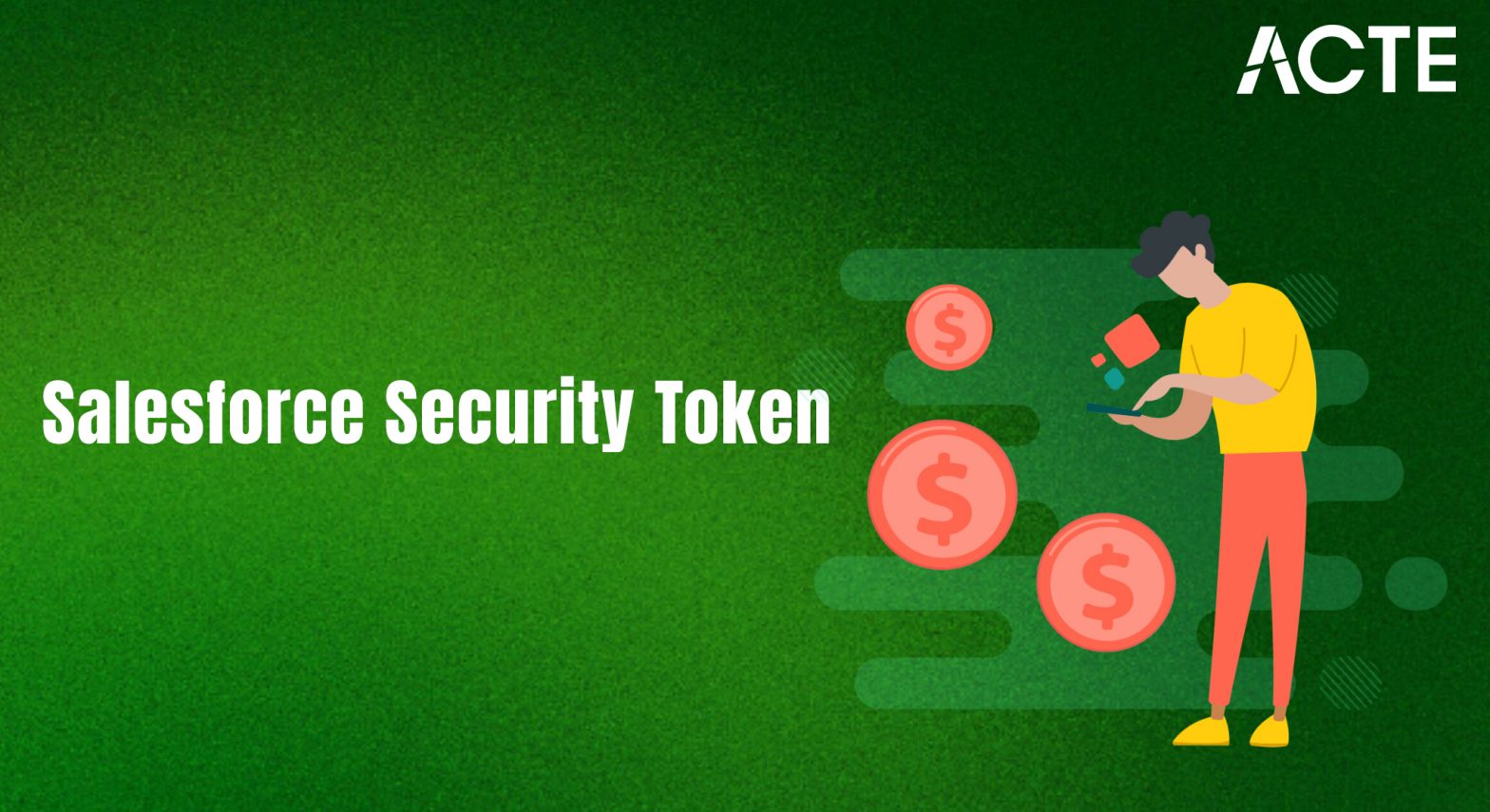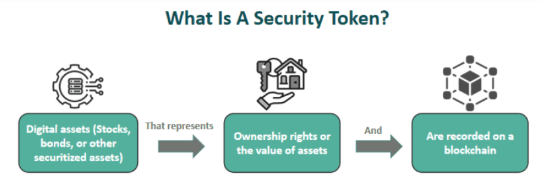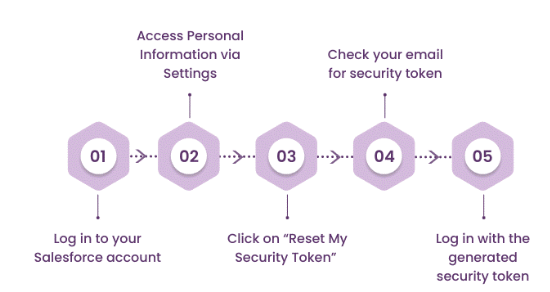
- Introduction to Salesforce Security Token
- Importance of the Salesforce Security Token
- How the Security Token Works
- How to Find Your Salesforce Security Token
- Accessing the Token in Salesforce
- Resetting the Security Token
- Best Practices for Managing Security Tokens
- Common Issues with Salesforce Security Tokens
- Conclusion
Introduction to Salesforce Security Token
A Salesforce Security Token is a unique alphanumeric code that adds an extra layer of security to your Salesforce account. It is typically used for API (Application Programming Interface) access, ensuring that only authorized users can connect to your Salesforce instance from external applications. Salesforce, being a cloud-based platform, operates in a highly dynamic environment where access from external systems needs to be tightly controlled. The security token helps in achieving Salesforce Training by adding an additional security check during the login process when accessing Salesforce data externally.In the past, simple username and password combinations were enough for logging into Salesforce authentication. However, as security risks evolved, Salesforce introduced more robust security mechanisms, one of which was the implementation of security tokens. This enhancement ensures that external applications or integrations that interact with Salesforce do so only with proper authentication.
Importance of the Salesforce Security Token
The Salesforce Security Token is essential for ensuring the security and integrity of your Salesforce data when accessed externally. The primary importance of the security token lies in the following areas:
- External API Access: Salesforce uses the security token as part of the authentication process when accessing its data through Application Programming Interface calls. Applications or services that want to interact with Salesforce externally (such as integration tools like MuleSoft, Zapier, or custom-built integrations) need this security token to establish a connection. Sales Process in Salesforce is especially important for ensuring that only authorized users and applications are granted access.
- Protection Against Unauthorized Access: Salesforce offers a robust set of security features, and the security token adds an additional layer of protection against unauthorized access to your account. By requiring the token for Application Programming Interface login, Salesforce ensures that only trusted applications can access your data. This helps mitigate the risks associated with brute force attacks or unauthorized data manipulation.
- Compliance and Data Integrity: Many businesses use salesforce pricing to manage sensitive customer data. To ensure compliance with data protection regulations such as GDPR (General Data Protection Regulation) or CCPA (California Consumer Privacy Act), protecting that data from unauthorized access is paramount. The security token ensures that any integration with external systems is secure, thus helping to maintain compliance with legal and regulatory requirements.
- Secure Login Process: By adding the security token to the login process, Salesforce authentication ensures that external access requests are not only validated with a username and password but also with an additional piece of information (the token). This two-factor authentication model makes it harder for attackers to compromise accounts or steal sensitive data.
Learn the fundamentals of Salesforce with this Salesforce Training .
How the Security Token Works
Salesforce security tokens work as an added component to your regular username and password for Application Programming Interface login. When you attempt to log in to salesforce pricing using an external application or integration (such as an external database, ETL tool, or web service), Salesforce authentication requires the combination of your username, password, and security token. The token is a randomly generated string that is sent in conjunction with the login request to authenticate the user.

Here’s how the process works in more detail:
- Login Attempt: When an external application attempts to access Salesforce, it sends a request that includes the username, password, and security token.
- Token Validation: salesforce pricing compares the provided security token with the one generated and stored for the user. If the token matches, Salesforce grants the request.
- Successful Login: Once validated, the external application is authenticated and can securely access Salesforce authentication data as per the permissions defined for the user account.
- Login to Salesforce: Start by logging into your Salesforce account with your regular username and password. Ensure you are logging into the correct Salesforce environment (Production, Sandbox, or Developer Edition).
- Access Your Settings: Click on your avatar or profile icon in the top-right corner of the Salesforce interface.From the dropdown menu, select Settings or My Settings (depending on your version of salesforce pricing).
- Navigate to Reset My Security Token: In the Settings page, find and click on Personal on the left sidebar.Under the Personal section, you’ll see a link for Reset My Security Token. Click on it.
- Request Token: After clicking the link, Salesforce will generate a new security token and send it to your registered email address. Salesforce Sandbox Explained ensures that only authorized users can access the token.
- Check Your Email: Within a few minutes, you will receive an email with the new security token.The email will contain the token, which you will use for API login requests.Once you have your token, you can securely use it in API requests, data integrations, and other external applications.
- Third-Party Integrations: Many integration tools (like Zapier, MuleSoft, or Informatica) will ask for your Salesforce username, password, and security token to establish a connection. These tools typically provide an interface where you can enter the token once.
- Environment Variables: For developers building integrations with Salesforce using REST or SOAP APIs, Salesforce Training a best practice to store the security token as an environment variable rather than hardcoding it into your application. This adds an additional layer of security.
- Password Management Tools: Since the token is sensitive data, using a password management tool to store and manage security tokens is a secure method for keeping the credentials safe.
- Login to Salesforce: As mentioned earlier, log in to your Salesforce account with your credentials.
- Navigate to Security Token Reset: Go to the Settings page, then click on Reset My Security Token under the Personal settings Guide To Salesforce Data Validation Rules .
- Click on Reset: Once you click the reset link, Salesforce will send a new security token to your email address.
- Update External Applications: After resetting the token, don’t forget to update the security token in all external applications and integrations that use it. The previous token will no longer work, so you must replace it with the new one.
- Cause: This issue usually occurs when the security token entered into the integration tool or API request does not match the one that Salesforce issued.
- Solution: Ensure you are using the correct token from the most recent email. If necessary, reset the security token and update your external integrations with the new one.
Token Not Sent to Email
- Cause: Sometimes, Salesforce may experience delays in sending the token to the registered email address, or the email may be filtered by a spam/junk folder.
- Solution: Check the spam/junk folder in your email inbox. If the token isn’t received, try requesting the token again. Make sure you are using the correct email address registered with Salesforce.
- Cause: If you are working in a sandbox environment and have forgotten to change the token when moving to a production environment, Salesforce Workbench can cause a token mismatch error.
- Solution: Be sure to request a new security token for each Salesforce environment (e.g., sandbox vs. production).
- Cause: If you haven’t used the Token in Salesforce for a while, the token may expire.
- Solution: Reset your security token and use the new one to re authenticate your integrations.
It’s important to note that the security token is unique to each user and is generated per user instance. Amazon Web Services Salesforce is also tied to the instance of Salesforce you are using, so if you change your instance (e.g., migrating from a sandbox to a production environment), your security token will change as well.
Dive into Salesforce by enrolling in this Salesforce Training today.
How to Find Your Salesforce Security Token
Finding your Salesforce security token is an easy process, but it requires you to be logged into your Salesforce account. Here are the steps to find your token: Steps to Find Your Salesforce Security Token:
Accessing the Token in Salesforce
If you need to access the Token in salesforce pricing for use in an integration, Remember, security tokens are sensitive pieces of information and should be stored securely. Do not share your security token in unsecured locations or with unauthorized users, it’s vital to store it securely. Here are a few ways to do so:
Take charge of your Salesforce career by enrolling in ACTE’s Salesforce Master Program Training Course today!
Resetting the Security Token
If you suspect that your Salesforce Token in Salesforce has been compromised or you simply want to reset it for security reasons, you can easily do so from within your Salesforce settings. Resetting the security token will invalidate the old token, and a new one will be sent to your registered email address. This can be done in the following steps:

Best Practices for Managing Security Tokens
To ensure that your Salesforce security token is always secure and functional, follow these best practices Use Environment Variables For integrations and API access, avoid hardcoding security tokens in your source code. Instead, store them securely in environment variables or configuration management tools.Limit Access Only provides access to the security token to trusted users or systems. Context Variables in Salesfoce Tiggers should not be shared openly or stored in unprotected locations.Reset Periodically For added security, reset your security token periodically, especially if you have reasons to believe that your token may have been exposed or compromised.Monitor Integration Logs Always monitor the logs of your integrations to track any unusual login attempts or errors related to the security token.Educate Users Ensure your team understands the importance of the security token and how to handle it securely. This includes not sharing it via unsecured communication channels.
Want to ace your Salesforce interview? Read our blog on Salesforce Interview Questions and Answers now!
Common Issues with Salesforce Security Tokens
While Salesforce security tokens are an essential tool for securing external access, users often encounter issues when working with them. Below are some of the common problems and their solutions:
Invalid Security Token
Token Mismatch Between Environments
API Integration Fails Due to Expired Token
Conclusion
Salesforce Security Tokens play an essential role in safeguarding data and ensuring secure external access to your Salesforce instance. By requiring an additional layer of authentication beyond just username and password, they help prevent unauthorized access and protect against malicious threats. Salesforce Training critical to understand how to find, reset, and properly manage security tokens, especially in API integrations or third-party applications.By following best practices for security token management, you can ensure that your Salesforce integrations remain secure, compliant, and functional. Managing your Salesforce security token correctly is a small but significant part of your overall security strategy that can help protect sensitive customer data and maintain system integrity.





